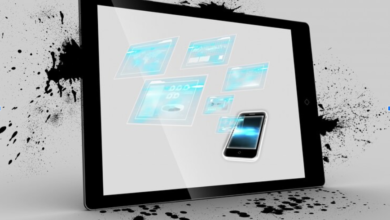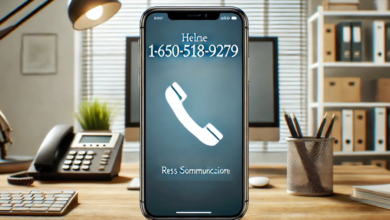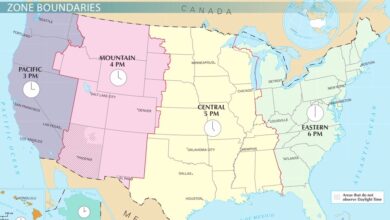Why Is Windows 11 Copying Files to USB Drive Slow? Tips to Speed It Up

Windows 11 copying files to USB drive slow can be frustrating, especially when you need to transfer important documents or photos quickly. Many users experience delays that can seem endless. Understanding why this happens and how to fix it is essential for a smoother experience.
There are several reasons why your USB transfers might be slow. It could be due to the type of USB drive you are using, your computer’s settings, or even the files you are trying to copy. In this blog post, we will explore these reasons and provide you with simple tips to speed up the process. Let’s dive in!
Understanding Why Windows 11 Copying Files to USB Drive Slow Happens
Copying files to a USB drive can sometimes take longer than expected. When you notice that Windows 11 copying files to USB drive slow, it can be due to several reasons. First, the speed of your USB drive matters a lot. Some USB drives are just faster than others. If you have an older USB 2.0 drive, it will be much slower compared to a newer USB 3.0 or 3.1 drive.
Another reason could be the size of the files you are transferring. Large files, like videos or games, will take longer to copy than smaller ones. Also, if your computer is busy doing other things, it might slow down the file transfer process. Your computer’s speed and performance play a big role in how fast files move to the USB drive.
Common Reasons for Slow USB Transfers on Windows 11
There are several common reasons why you might experience slow USB transfers. Here are a few key points to consider:
- USB Drive Type: As mentioned earlier, the type of USB drive can impact transfer speed. Always try to use USB 3.0 drives for faster speeds.
- File Size and Type: If you are copying many small files, it can sometimes be slower than copying one big file. Each file has a little overhead, which can add up.
- Background Processes: If your computer is running many programs at once, it can slow everything down. Closing unnecessary programs can help.
By understanding these common issues, you can start to figure out what might be causing your slow file transfers.
Best Practices for Faster File Transfers on Windows 11
To help speed up your USB file transfers, there are some best practices you can follow. Here are a few tips to make the process smoother:
- Use a High-Speed USB Drive: Always choose a USB drive that supports USB 3.0 or higher. This can significantly increase transfer speeds.
- Limit Other Tasks: Try to minimize what you are doing on your computer while transferring files. Closing extra applications will free up resources.
- Check USB Port: Make sure you are using a USB 3.0 port on your computer. Sometimes, using a USB 2.0 port can slow things down.
By following these simple practices, you can enjoy quicker file transfers and a better overall experience when using Windows 11.
How to Check Your USB Drive Speed
Knowing the speed of your USB drive can help you understand its performance. You can check the speed using simple methods:
- Use Software Tools: There are many free programs online that can test USB drive speed. Tools like CrystalDiskMark can show you how fast your drive is.
- Look for Labels: Sometimes, USB drives have their speed printed on the packaging or the drive itself. Look for terms like “USB 3.0” for faster speeds.
- Compare with Others: If you have multiple USB drives, you can compare their speeds to see which one works best with Windows 11.
Understanding your USB drive’s speed can help you decide whether it’s time to upgrade to a faster model.
click here to download photos & document quickly
Optimizing Your Computer Settings for Quick USB Transfers
To speed up Windows 11 copying files to USB drive slow, you might need to tweak some computer settings. Small changes can make a big difference in how fast files transfer to your USB drive.
One important setting is the “Power Options.” Make sure your computer is set to high performance instead of power-saving mode. This will help your computer run faster and handle file transfers better. You can find this option in the Control Panel under “Power Options.”
Another setting to check is the USB selective suspend setting. This setting can sometimes cause slow transfers. To disable it, go to Device Manager, find your USB drive, and change its properties. Turning off this feature can help your USB drive work better.
Choosing the Right USB Drive for Windows 11
When it comes to selecting a USB drive, not all drives are created equal. Choosing the right one can make a huge difference in how fast you can transfer files. Here’s what to consider when picking a USB drive:
- Speed Rating: Look for drives labeled USB 3.0 or higher. These will generally transfer files much faster than older USB 2.0 drives.
- Storage Capacity: Make sure the drive has enough space for your files. A drive that’s too full will be slower and might not work well.
- Brand Reputation: Some brands are known for better performance and reliability. Research reviews before buying to ensure you get a good product.
Picking the right USB drive will help you avoid slow transfers and get the best performance from your Windows 11 system.
Tips to Speed Up Windows 11 Copying Files to USB Drive
If you want to make your file transfers even faster, here are some extra tips to help speed up Windows 11 copying files to USB drive:
- Use File Compression: If you are transferring many files, consider compressing them into a single ZIP file. This reduces the total file size and makes transfers quicker.
- Defragment Your Hard Drive: Regularly defragmenting your hard drive can improve overall performance. Use the built-in defragmentation tool in Windows 11 to keep things running smoothly.
- Keep Drivers Updated: Make sure your USB drivers are up to date. Outdated drivers can lead to slow performance. Check for updates through Windows Update.
By using these tips, you can significantly improve the speed of your file transfers to USB drives on Windows 11.
How to Troubleshoot Slow USB Transfer Issues
If you’re still having problems with slow transfers after trying the above tips, you may need to troubleshoot further. Here are some steps to help identify the issue:
- Test with Another USB Drive: Try using a different USB drive to see if the problem persists. If the new drive works faster, your original drive may be slow or faulty.
- Check USB Ports: Inspect the USB ports on your computer for dust or damage. Sometimes, a dirty or damaged port can cause slow speeds.
- Run Windows Troubleshooter: Use the built-in troubleshooter in Windows 11 to detect and fix common problems. This tool can help you find and solve issues that might be affecting USB transfers.
Following these troubleshooting steps can help you identify the cause of slow transfers and get back to fast copying.
Conclusion: Enjoy Faster Transfers on Windows 11!
In summary, if you find that Windows 11 copying files to USB drive slow, don’t worry! You now know many simple ways to speed things up. From choosing the right USB drive to adjusting your computer settings, there are many tricks to help. Keeping your computer and USB drives updated can also make a big difference.
Remember, file transfers don’t have to be a hassle. With a little effort, you can enjoy quicker and smoother transfers on your Windows 11 system. If problems persist, it might be time to consider a new USB drive. Follow these tips, and you’ll be transferring files like a pro in no time!



